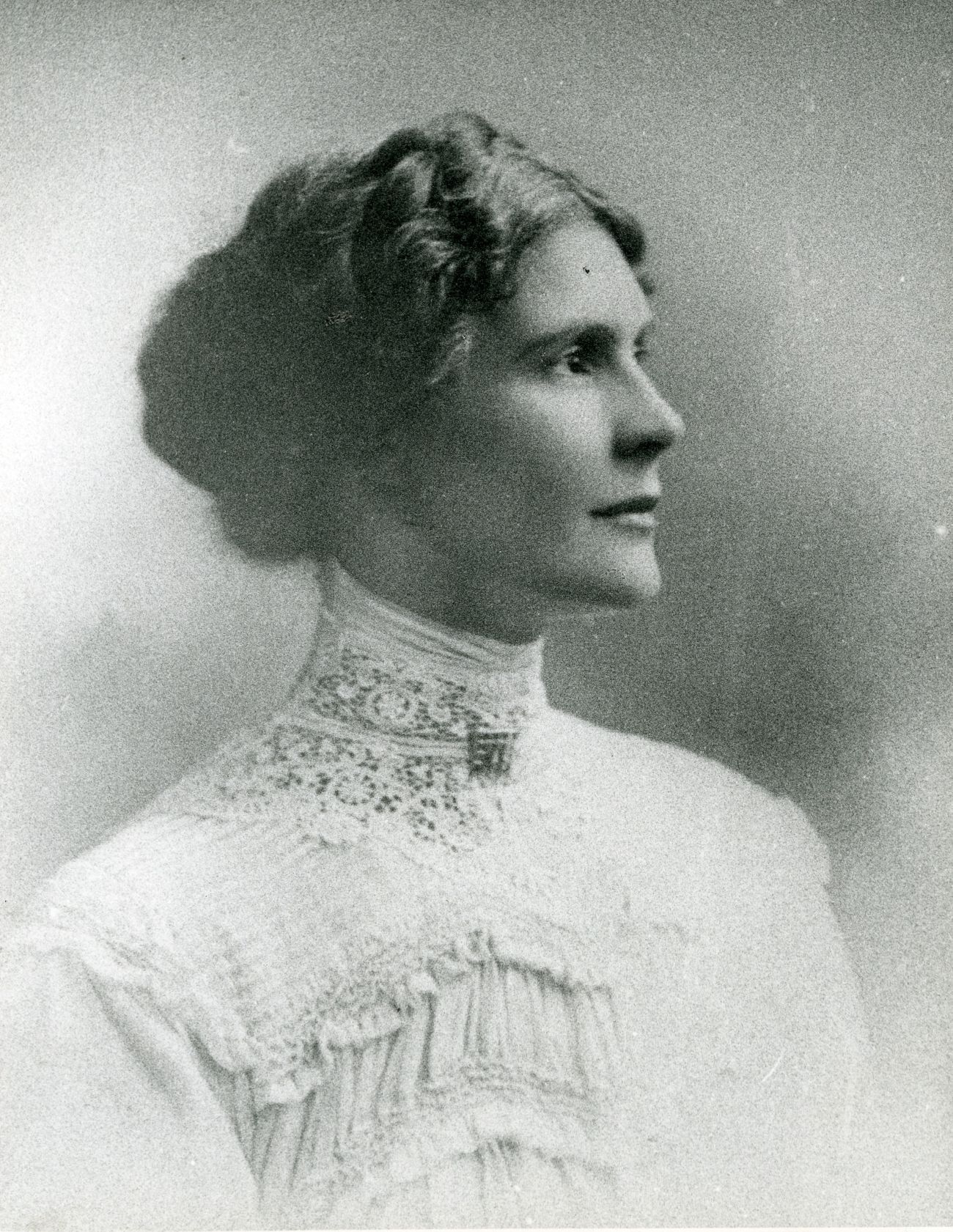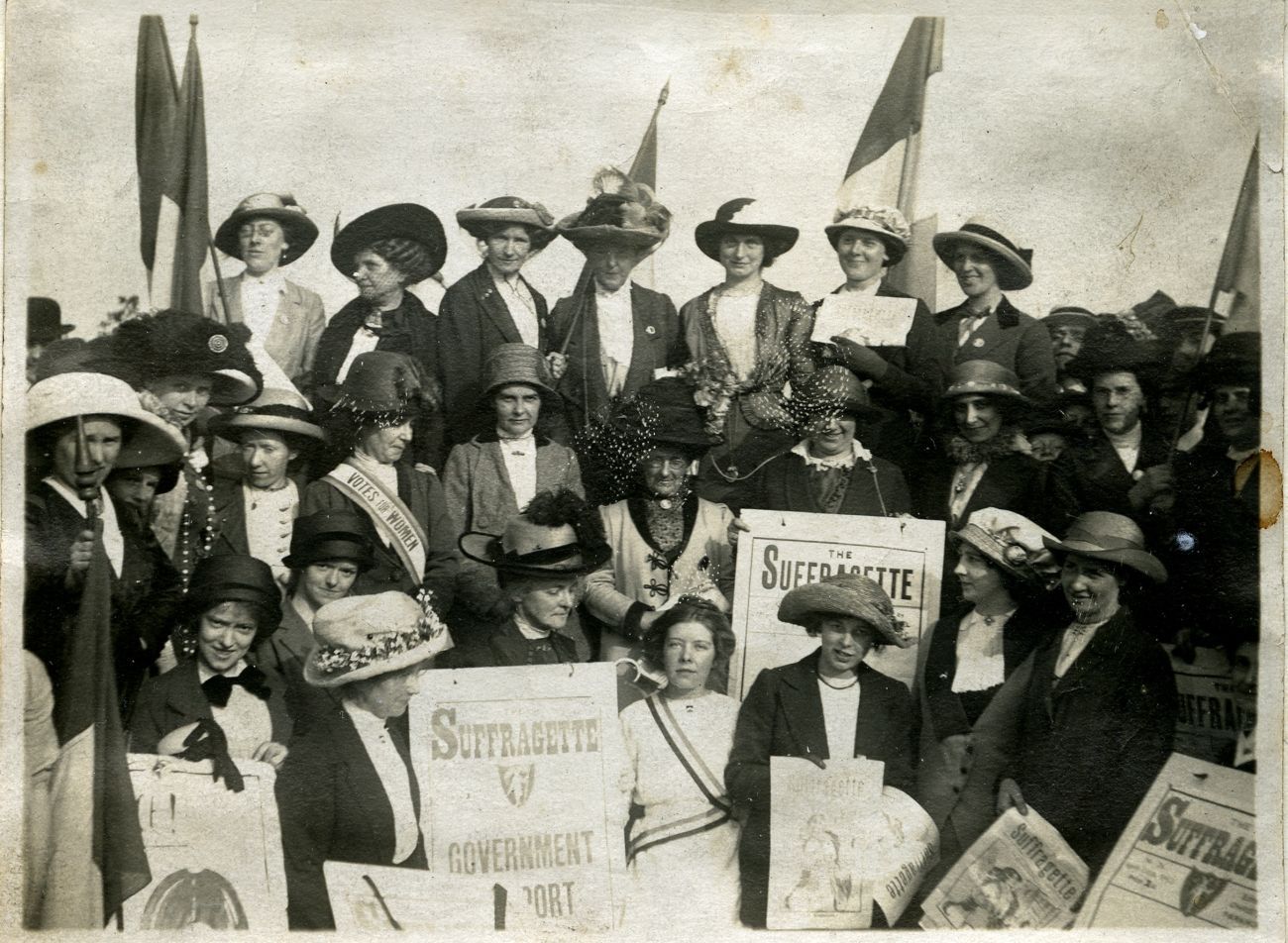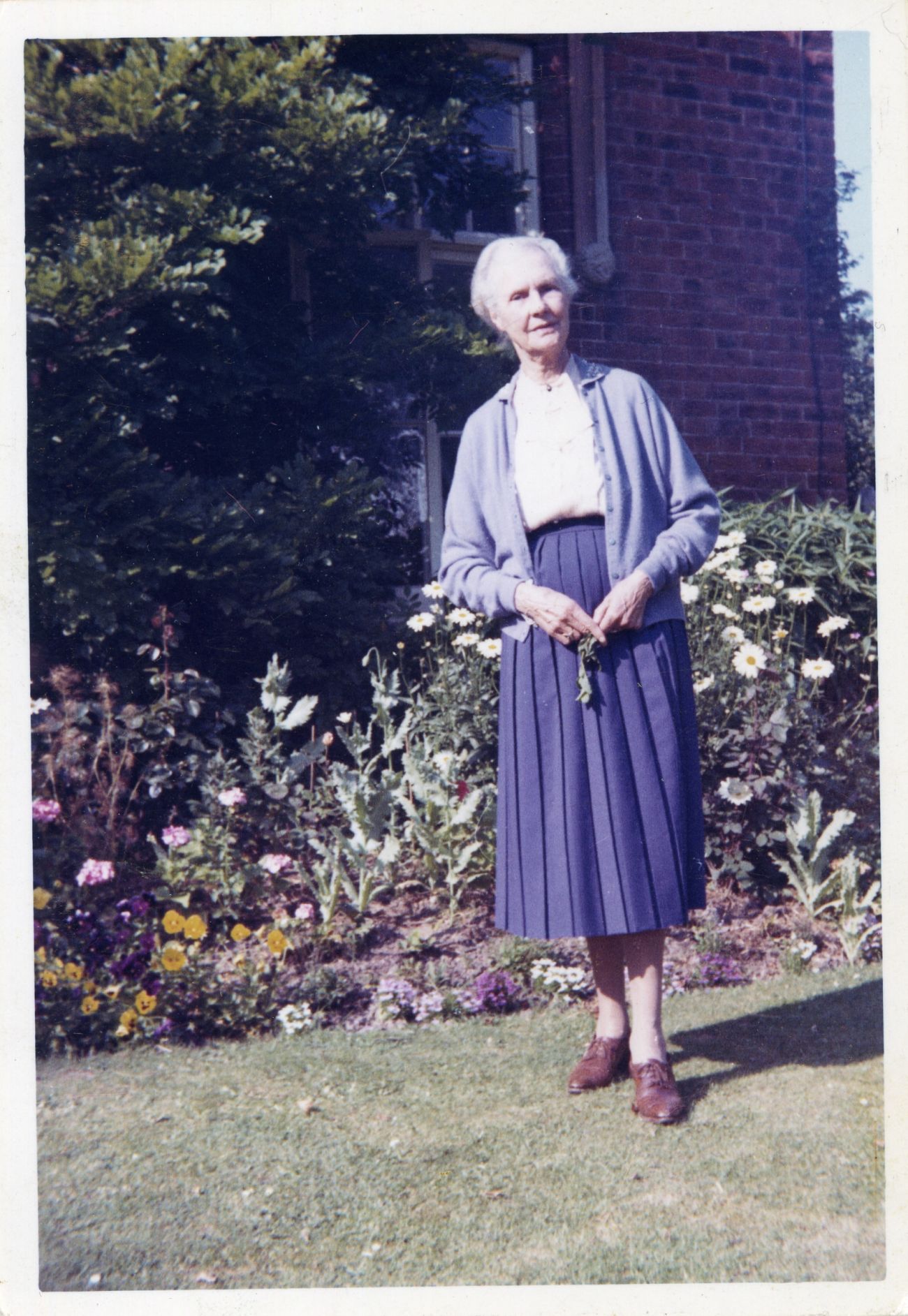- Story
- Tower of London
Is the King's crown safe?
The story of the 'Tower Suffragette'
On Saturday 6th May 2023, the Coronation of King Charles III took place at Westminster Abbey. The Crown Jewels, which are kept at the Tower of London formed an important part of the ceremony, as the sacred objects which represent the powers and responsibilities of the monarch are presented to the new King or Queen during the service.
The Crown Jewels have a long history and have witnessed many of the triumphs and tribulations of Great Britain. In this story, we will explore their connection to a Leeds suffragette, Leonora Cohen, OBE, nicknamed 'The Tower Suffragette,' who fought her whole life for the rights of women.
9 minute read
Leonora Cohen, OBE (née Throp) was born in 1873 in Hunslet, Leeds to Jane Throp, a seamstress and Canova Throp, a sculptor.
Her father died at a young age, leaving Jane to raise Leonora and her two brothers.
From early on, Leonora experienced the hardships of the inequality between men and women. Her father’s loss was felt in the wages her mother brought home, 3 ¼ d per hour as a tailoress. At this time, male tailors were earning double per hour. She left school as soon as she was old enough to work with her mother and make a financial contribution to the household. At the age of 14, she became an apprentice milliner.
Jane would often lament “Leonora, if only we women had a say in things” but women didn’t have a say. Women couldn’t vote.
This played on Leonora’s mind and in an interview with the Yorkshire Evening Post in 1966, she said “I have always been appalled by injustice. A drunken lout of a man opposite had a vote because he was male. I vowed I’d try and change things, I felt it in my bones.”
In October 1903, Emmeline Pankhurst founded the Women’s Social and Political Union (WSPU), a campaign for women’s suffrage and equality. Although the movement is famously associated with acts of violence and vandalism, it didn’t start off as a militant organisation.
Leonora joined in 1909 and recalled speaking to crowds “for the cause in every park and on all the moors in Leeds.” The Leeds branch of the WSPU regularly had a stand in Victoria Square, located outside of Leeds Town Hall and she would enlist her son Reg to help sell “The Suffragette,” a newspaper described as “the organ of the movement.” Suffragettes raised funds and awareness for their cause by hosting social events such as fancy-dress dances and making marmalade and jam. She laughs, telling a reporter in one interview, “I think I must have made enough marmalade to fill Roundhay Lake.” An impressive feat, given that the lake is in Roundhay Park, Leeds, known for being one of the largest city parks in the world.
Jam and marmalade could only take the suffragettes so far. It soon became apparent that for their cause to be heard and taken seriously, they needed to change their tactics, adopting the mantra “Deeds, not words.” They soon began taking direct action, which included arson, bombings, hunger strikes and dangerous stunts, some of which ended tragically like Emily Wilding Davison’s attempt to cross the track at Epsom during the 1913 Derby, where she was fatally trampled by the King’s horse.
Reflecting on this, Leonora said “I only became a militant suffragette because I realised that the use of constitutional methods for many years had achieved nothing.”
Leonora became one of Emmeline Pankhurst’s bodyguards and describes wrapping herself in “an undercovering of corrugated brown paper for protection.” The extra padding proved useful in 1911, when she was arrested for the first time at a demonstration for throwing a rock at a government building. She remembers being “knocked down and rolled under the hooves of the police horses. Over 300 of us were taken to Bow Street and I was given a week in Holloway.” According to reports, there were so many arrests that the police had ran out of charge sheets, the cells were full, and it took a week to deal with the prisoners. At that time, London’s Holloway Prison, which has since closed, was one of the largest women’s prisons in Europe and had a reputation for housing suffragette inmates. Former detainees would receive a ‘Holloway Brooch,’ a medal presented by the WSPU for their fight for the cause. Those who had served prison time were documented in a Roll of Honour, dated between 1905 and 1914.
Her ’crowning’ moment came in 1913, when the Leeds branch of the WSPU came to London to make deputations to Parliament. After her rousing speech, which the Chancellor of the Exchequer, David Lloyd George had deemed worthy of the floor of House of Commons, women’s suffrage was still not included in the reform bill and then the idea of it was dropped altogether.
Ignored again, filled with frustration, anger and poised with the expectation to do something truly outstanding for the cause, she picked up a London travel guide, studied it very carefully and decided that she would “smash something at the Tower of London.”
On 1st February 1913, she arrived at the Tower of London and made her way to the Wakefield Tower, where the Crown Jewels were on display. The room was filled with schoolchildren, and she was mistaken by the Yeoman Warder as their schoolteacher, so he paid no attention to her. She reached into her coat and pulled out a small iron bar from a kitchen grate with a label attached to it saying, “My protest against the government’s treachery to the working women of Great Britain.” She threw it over the heads of the children, and it smashed into the glass show case containing The Order of Merit. The Warders seized her, and she was taken into custody.
Immediately, the news of this shocking act spread, and alarm bells rang throughout Britain. The government ordered the closure of the Tower, Hampton Court Palace, Kensington Gardens, Kew Gardens and Holyrood Castle. Newspaper headlines screamed “Is the King’s Crown safe?” while reassuring concerned readers that the electric current running around the Crown is “so strong that contact with the metal would probably mean instant death to any intruder so incautious as to touch them.”
At Thames Police Court, Leonora was committed for trial and was charged for unlawfully and maliciously committing damage to public property by breaking a show case at the Tower of London. The damage exceeded £5 and was estimated at a cost of £7.
At trial, she had decided to represent herself, taking on the cross examination of witnesses. She asked a Yeoman Warder “Was I hysterical?” He replied, “I should say your nerves were somewhat shaken and you were very excited.” She retorted, “I say that I was quite calm, I’ve never felt more calm in my life.” Which was met with a roar of laughter from the courtroom.
Leonora would later admit that she had been terrified, saying “I hate violence and destruction. I can’t think of how I managed to do such a thing.”
The brilliance of her defence was her insistence to ask a jeweller for a private estimate of the cost of damage to the show case. When the prosecutor’s show case maker told the trial that his estimate for repairing the damage would be £7, the defendant remarked “that is a very fancy price, and it is State money that will be wasted.” The jeweller’s quote came back as £4 18s, including a good profit. Leonora argued that because the cost of the damage was less than £5, she should never have been indicted for the offence. The jury deliberated at length and could come to no decision, so she was acquitted.
Leonora continued to be surveilled by the police. Her speeches were scrutinised for any hint of threat, and in May 1913 she was brought before the Leeds County Court and charged on remand for inciting to commit crime and for disturbing the peace. Lines taken from her speech given at the procession to Woodhouse Moor (also known to Leeds locals as Hyde Park), such as “every woman in the Union is ready for anything, namely arson and pillar boxes” were used to accuse her of damage to pillar boxes in Leeds.
Defending herself again, she asked “How many militant actions followed my speeches?” The witness replied, “That I cannot say.” “Have you any evidence to prove that damage can be attributed to the members of the WSPU?” The witness responded, “We have no evidence.”
After a lengthy battle, she agreed to be “bound over,” meaning that to keep the peace, she would promise not to re-offend and be given a fine. She could not participate in WSPU activity.
In November 1913, Leonora was arrested one last time, charged with damaging three plate-glass windows in the Labour Exchange, Portland Crescent, Leeds during a visit from the Prime Minister, Herbert Asquith. The total estimation for damage was £26, and she was sent to Armley Gaol, now HMP Leeds to await trial. Leonora, along with three other prisoners, helpfully named ‘Woman A,’ ‘Woman B,’ and ‘Woman C’ by local newspapers at the time, went on a hunger strike, refusing to eat or drink. It was stated that she was so ill and weak that she couldn’t have her temperature taken, let alone appear in court. She was temporarily released from gaol on the grounds of poor health around a week after her arrest. She never did return to prison.
The outbreak of the First World War in 1914 saw the end of militant activity, as the WSPU stopped working toward suffrage. Women threw themselves into war work, supporting the fighting forces. Leonora worked in a munitions factory and was quickly appointed to membership of the National Munitions Advisory Committee, where she was the only woman representing the trade unions. She served on several local committees and was elected President of the Leeds and District Trade Council in 1926. Later, she became President of the Yorkshire Federation of Trade Councils.
In 1922, she became a Justice of Peace and in 1938 was appointed to the Licensing Bench. She served as a Leeds Magistrate for 30 years. She was chair of the Women’s Employment Committee under the Ministry of Labour and in 1928, she received an Order of the British Empire for her public service, where she joked that she went from “prison to the palace.” She even returned to the Tower of London for a less dramatic visit.
In 1918, Parliament granted women over 30 who were householders or wives of householders the right to vote. It wasn’t until 10 years later, in 1928 that women over the age of 21 could vote, regardless of status.
In her later years, she lived a quieter life, living in a flat in Headingley, Leeds. Her husband, Henry Cohen, passed away in 1949. Henry had been her biggest support and strength. He was by her side throughout each court defence, often seen carrying posies, which were part of Leonora’s outfit. He had endured years of rude and unpleasant comments aimed at his wife such as “If I had a wife like yours, I should tie her to the table leg.”
Leonora said of her husband “I am afraid I was a terrible worry to my husband, he was the most patient, kind and understanding.”
In his will, Henry left a moving tribute to Leonora, saying “I have lived in perfect appreciation of all her loving and unselfish devotion throughout our happy life together… My love for her has been the one perfect happiness that life has given to me, and I leave my son the solemn duty of taking my place to make her declining years happy and comfortable as she deserves of us both.”
Leonora would live to be 105. On her 100th birthday, she said “One hopes that women of the future will organise themselves into groups or unions and that they will use their vote intelligently to ensure that we will have the very highest standards of womanhood.”
Acknowledgements: Research kindly supported by Leeds Museum and Galleries.




